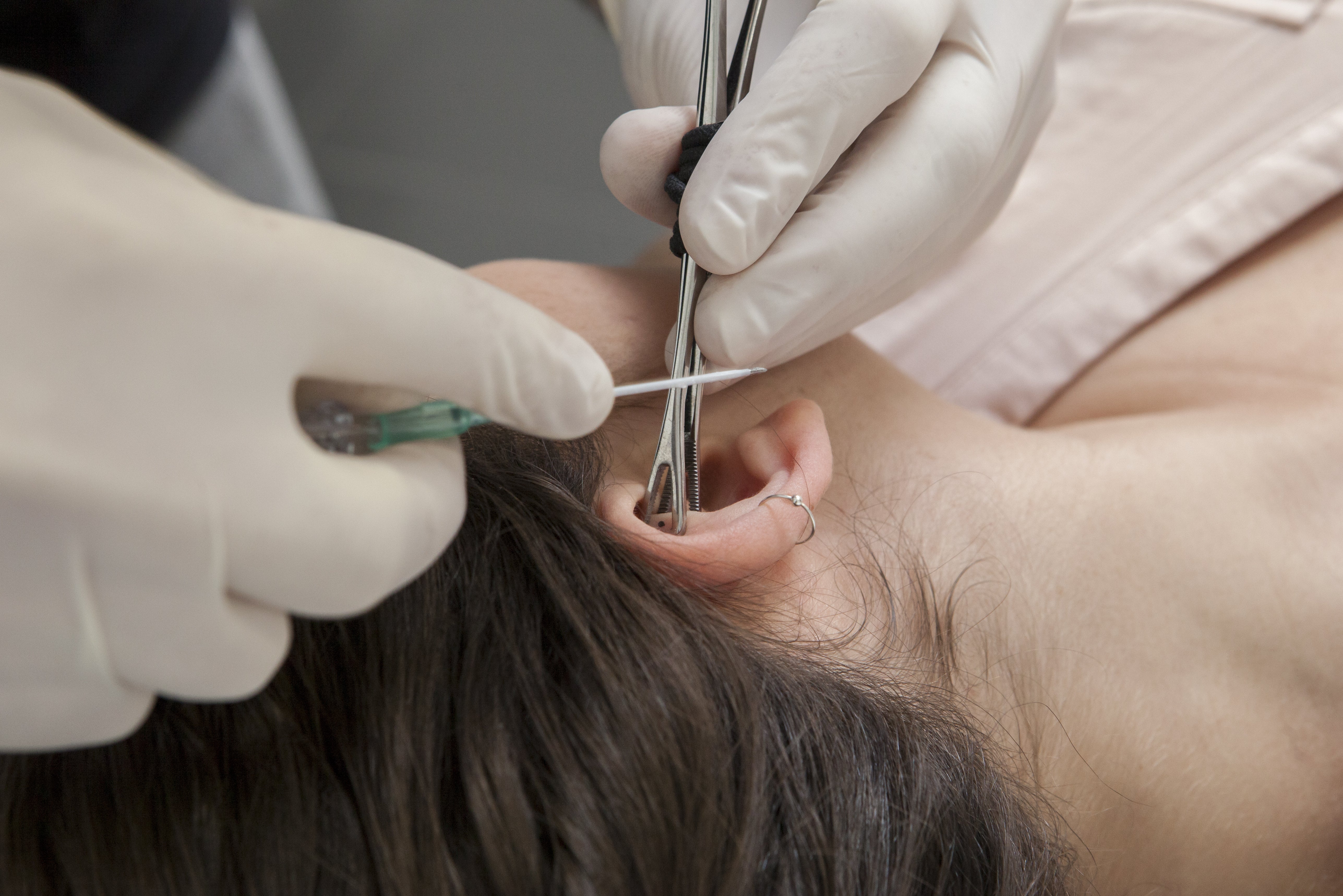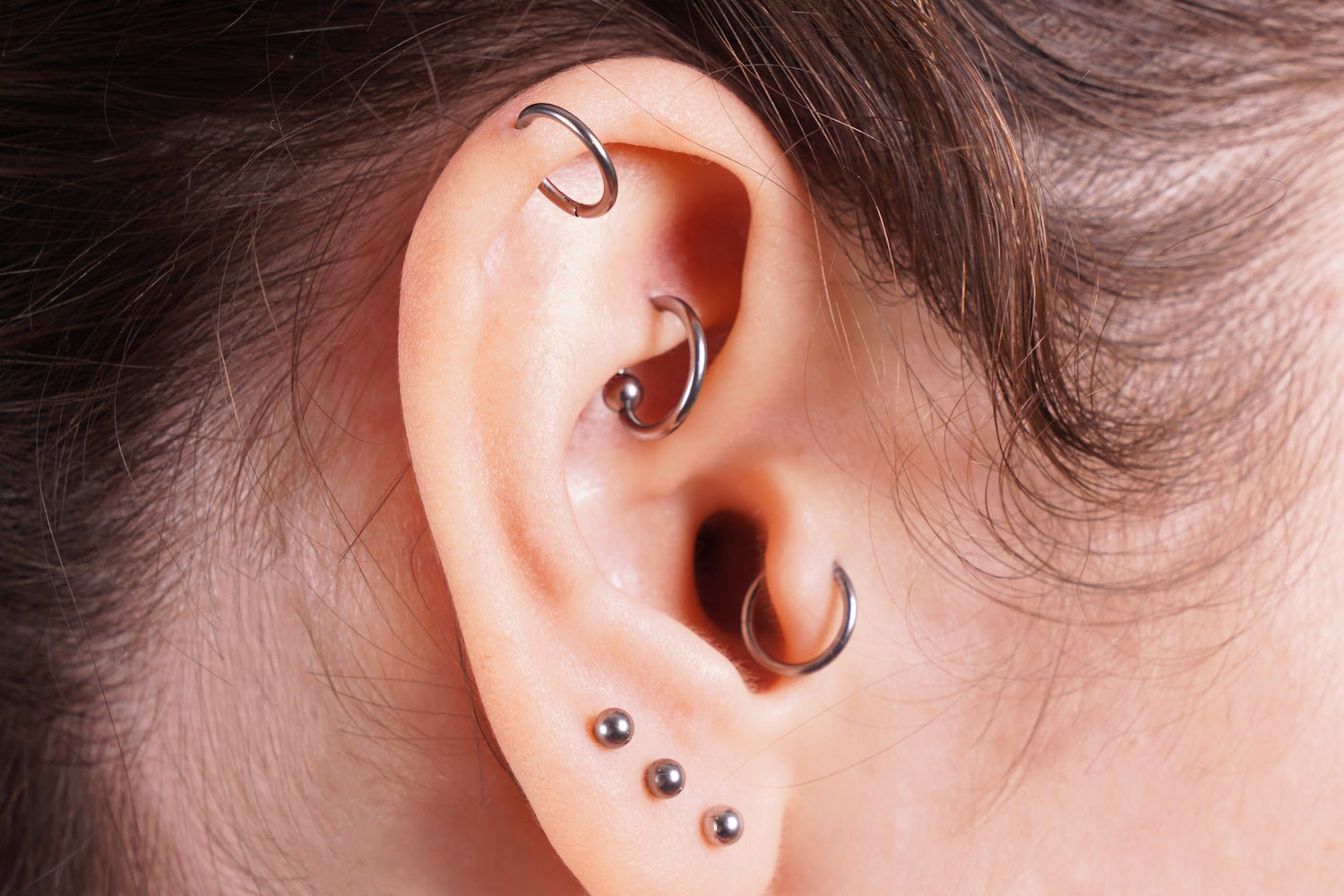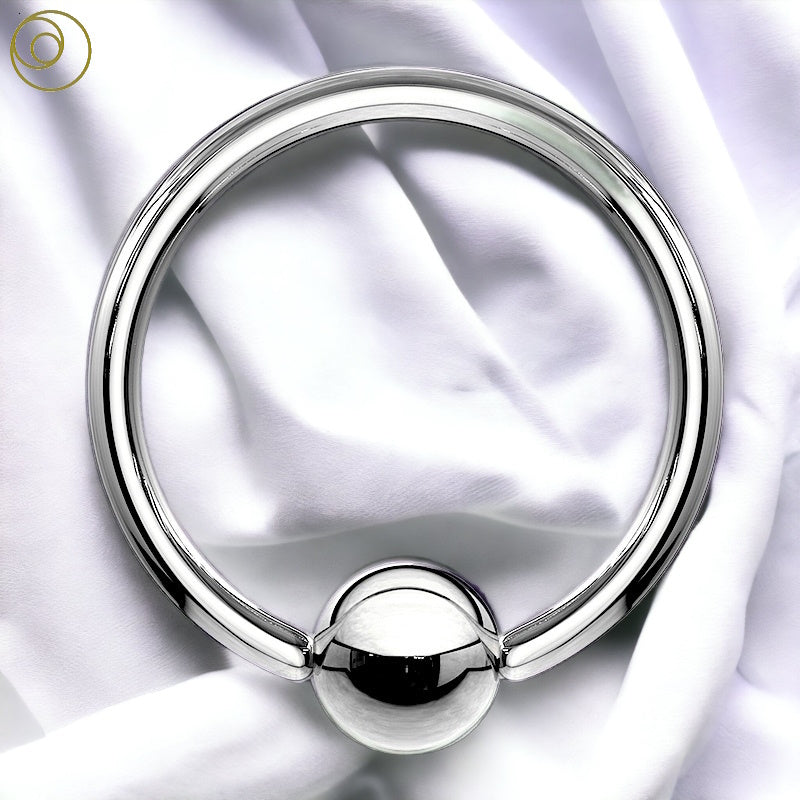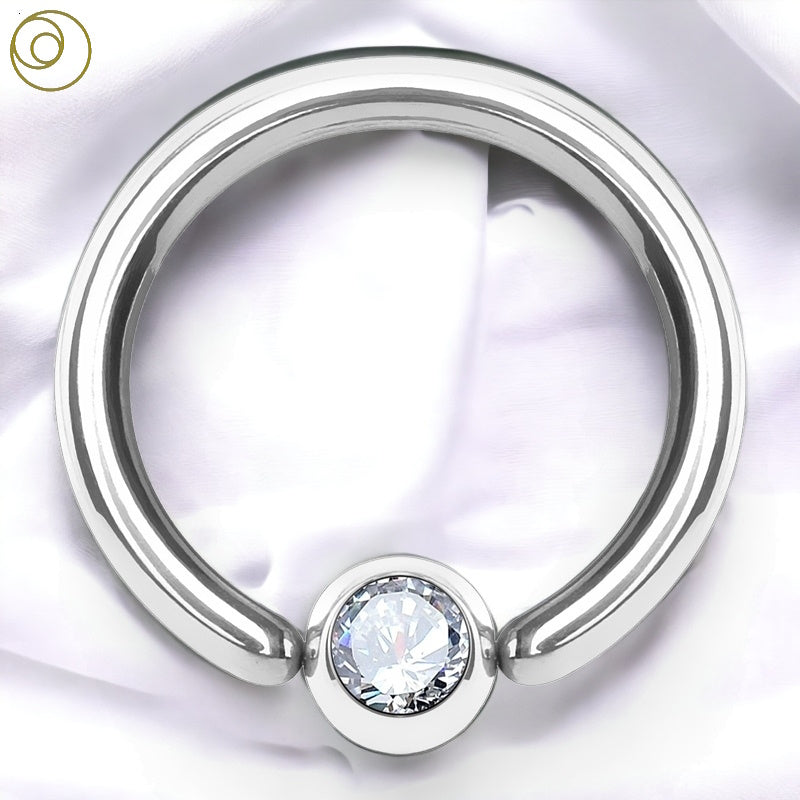
Rook Piercing: An Information Guide To Curing Boring Ears
Share
Rook Piercing Article Quick Reference:
History | Myths | Complications | Pain | Cost | Procedure | Healing | Aftercare | Jewelry | Celebrities
Related Articles & Jewelry:
Rook Piercing Jewelry
A rook piercing is a type of ear piercing that is done in the cartilage fold located above the tragus and just below the outer ridge of the ear. The rook piercing involves creating a hole through the thick cartilage that divides the inner and outer parts of the ear. It is named after its location, which is in the ridge of cartilage known as the rook.
Check out the diagram below to get a better visual of the location of a rook piercing.

A ROOK PIERCING HISTORY
Although the rook piercing has gained mainstream popularity in recent years, people believe it originated in North America, influenced by various tribal and indigenous cultures around the world that have practiced body modification for centuries.
Ear piercings, including the rook, trace back to ancient civilizations. For example, Ancient Egyptians are known to have adorned themselves with ear jewelry, and many indigenous cultures throughout history also commonly practiced ear piercings. In some cultures, these piercings held religious or cultural significance, while others adopted them purely for aesthetic purposes.
The modern resurgence of the rook piercing began to gain popularity in the 1990's and early 2000's. As body piercing became more mainstream, people sought out alternative placements for their ear piercings, moving away from the traditional lobe piercings. The rook piercing provided a unique and stylish option for those looking to express their individuality. Today, the rook piercing continues to be a sought-after choice for people looking to enhance their ear jewelry arrangement.
THE COMMON ROOK PIERCING MYTHS
There are a few common myths and misconceptions about the rook piercing. Let's take a look at a few of them:
- Myth - Rook Piercings Are Extremely Painful: In reality, pain tolerance varies from person to person. Generally, a rook piercing is considered to be moderately painful. The amount of discomfort experienced can depend on several factors. These include individual pain tolerance, the skill of the piercer, and the aftercare process. However, with proper care and an experienced piercer, the pain seems minimized
- Myth - Rook Piercings Always Get Infected: In reality, with proper aftercare, the risks are minimized. Follow the advice and instructions of a professional piercer. They suggest to clean the piercing and avoid touching it with dirty hands.
- Myth - Rook Piercings Cause Problems With Headphones And Earpieces: In reality, only some individuals experience temporary discomfort when wearing headphones. This issue is not universal. After the piercing fully heals, most people can comfortably wear headphones or earpieces without any issues. However, before using such devices, wait until the piercing fully heals.
Remember, everyone's experience with piercings can differ, so it's essential to consult with an experienced piercer. Follow their recommendations and aftercare instructions for the best possible outcome.
WHAT GROUPS IS THE ROOK POPULAR AMONG?
The rook piercing, is making waves, especially among the youthful exuberance of the late teens to mid-thirties crowd. They've got this thing for ear piercings with a twist – because who wants to be mainstream?
If we're talking gender, I'd say rook piercing is knocking on everybody's door. The ladies seem to have a special, soft spot for it. Meanwhile, the gents are now waking up to the charm of the rook piercing too.
Truth be told, these are all generic sweeping statements. After all, a rook piercing doesn't card at the door. Age and gender don't discriminate. Ultimately, the only drawback might be if you're allergic to cool!
ROOK PIERCING RISKS
Like any other body piercing, a rook piercing does carry some risks and potential complications. You should definitely consider them before you proceed. Here are some common ones:
- Infection: Public Enemy #1 when it comes to any piercing. Dirty needles or poor aftercare can lead to infections. So, make sure your piercing professional is as clean as a whistle. Also, that you follow aftercare instructions as if they're your favorite recipe.
- Piercing Migration Or Rejection: Sometimes, your body pulls off its best bouncer impression, decides it's not a fan of the new jewelry, and tries to push the piercing out.
- Allergic Reactions: If your body doesn't jive with the jewelry material (nickel is a common offender), an allergic reaction could be in the cards.
- Keloids and Hypertrophic Scarring: These are fancy words for when your body's healing gets super enthusiastic. This causes excessive raised scar tissue around the piercing area.
- Pain and Tenderness: There's a needle involved, and it's going through cartilage. So, some pain and swelling are sorta part of the package.
In short, while a rook piercing can make you look like the coolest cat in town, remember to weigh these risks and work only with a qualified professional piercer.
NOW FOR THE COMPLICATIONS
Before you jump into the piercing chair for a rook piercing, it's also wise to think about your health status. Here are a few medical conditions that might affect your experience or healing process:
- Diabetes: Individuals with diabetes may heal more slowly and are at a higher risk of infections. Before getting a piercing, ensure that your blood sugar levels are well-managed and stable.
- Blood Disorders: Conditions like hemophilia or other bleeding disorders create risk during a piercing. They increase the potential for excessive bleeding.
- Autoimmune Disorders: Conditions like lupus, rheumatoid arthritis, or Crohn's disease might affect your body’s healing process. This potentially make you more susceptible to infections.
- Skin Conditions: If you have a skin condition such as eczema, psoriasis, or frequent keloids, it can potentially affect your healing process and the skin around your piercing.
- Heart Coniditions: If you have any heart condition, particularly where you have a risk of endocarditis, it is important to consult with a healthcare provider before getting any kind of piercing.
Remember, it's important to discuss your health history with your piercing professional. Also, seeking advice from a healthcare provider will ensure a safe and smooth process.

CLOSING A ROOK
Reversing or closing up a rook piercing might be simpler than you think, but the success largely depends on how long you've had the piercing and how your individual body heals.
First, you will need to take out the jewelry from the rook. This should be done with clean hands to avoid introducing bacteria to the area. Even after removing the jewelry, make sure the area remains clean. Use a mild, non-alcoholic, fragrance-free soap or saline solution.
From there, it's just a matter of time. Your body will naturally start to close the hole on its own. However, everyone heals differently, and it can take several weeks or even months for the piercing to close, especially if you've had it for a long period of time.
Keep in mind that once a piercing is completely healed, it may not fully close. Also, the scar tissue may remain visible. In some cases, you might need a minor surgical procedure to close the hole completely.
A PAIN IN THE ROOK
Ah, the zillion-dollar question: How much does a rook piercing hurt? Well, this truly can vary from person to person, as everyone has a different pain threshold. However, since the rook is a thick piece of cartilage, it might be a bit more sensitive than, say, a standard lobe piercing. But remember, it's usually a pretty quick process, so the pain doesn't last long!
The following are a few tricks to help you ease the ouch before, during, and after your rook piercing:
- Breathing Techniques: Deep breathing or other relaxation techniques can calm your nerves and help manage pain. In through the nose, out through the mouth, and pretend you're in a serene spa!
- Over The Counter Pain Relievers: Some people find taking an over-the-counter, non-aspirin pain reliever like Acetaminophen (Tylenol) about an hour before the piercing can take the edge off. However, please check this with your piercer and avoid aspirin, as it can thin the blood.
- Have A Meal: Yes, really! Going in on an empty stomach can make you more susceptible to dizziness, so be sure to have a good meal before you go.
- Aftercare Is Key: Proper aftercare can prevent complications that might cause unnecessary pain later on, so be sure to follow your piercer's instructions.
The amount of pain is subjective, but with these tips, the process might sound less like a concert in a metal shanty and more like a quick pop song! Another great choice of rook jewelry is a captive bead ring. Captive bead rings are a popular choice and can be used in multiple different piercings. So, if you are looking for a combination of versatility and style, then captive bead rings are a good choice.

THE COST OF A HOLE IN THE ROOK
Piercing prices can vary significantly based on several factors, including the studio's reputation, the piercer’s experience, the region, and even the style of jewelry you choose. However, to give you some ballpark figures for a rook piercing in various U.S. regions, we can look at these estimates:
- East Coast: In cities like New York or Boston, the cost for a rook piercing might range from $50 to $70.
- West Coast: In places like Los Angeles or San Francisco, you might find the prices to hover around $60 to $80.
- Midwest: In central regions like Chicago or Minneapolis, the cost could range from $40 to $60.
- South: In cities like Austin or Atlanta, you might be looking at prices of around $40 to $60.
Remember, these are broad estimates and can vary considerably from one studio to another. To find the most accurate costs, it's best to contact local piercing studios. Also, understand that cost often correlates with quality and safety standards. Don't skimp on your health to save a few bucks! And don't forget the added cost of aftercare products and the jewelry itself. Also, these can be significant part of the total price.
ROOK PIERCING: THE PROCEDURE HIGHLIGHTS
For a rook piercing, piercers typically use a standard needle size of 16 or 18 gauge. Just to clarify, a lower gauge number means a thicker needle (and resulting hole), while a higher gauge number means a thinner needle.
These following highlights the general steps of a rook piercing procedure:
- Consultation: Before the procedure begins, the piercer explains the process, potential risks, and aftercare procedures.
- Cleaning: The piercer will clean the area around your ear, usually with an antiseptic solution, to minimize the risk of infection.
- Marking: Next, the piercer will mark the exact spot for the rook piercing with a surgical marker. This might involve them feeling for the correct anatomy with a gloved hand.
- Needling: The piercer will take a hollow needle, insert it through the mark on your rook, and out the other side. This will create a hole for the piercing.
- Inserting The Jewelry: The piercer will then thread the jewelry through the hollow needle and into the piercing. They'll typically use a pair of clamps to secure the area and make this process smoother.
- More Cleaning: The piercer cleans the area once again. It ensures that any excess ink from the marker or small amounts of blood no longer show.
- Aftercare Instructions: The piercer will provide detailed instructions on how to care for your new rook piercing.
Remember, everyone's experience may vary slightly, and professionals may have slightly different procedures.
ROOKS AVERAGE HEALING TIME
The type of tissue pierced leads the rook piercing to a longer healing time. On average, a it may take anywhere from 6 months to a year to fully heal. This is only a ballpark range though, and the healing period can significantly vary from person to person. It's based on factors such as the individual's health, lifestyle, and how well the aftercare instructions are followed.
Remember, even if the piercing seems to be healed on the outside, the inside may not be. It is always advisable to check with a piercing professional if you're uncertain about the progress of your healing. Despite the long-term commitment, many find the unique look of a healed rook piercing well worth the wait!
TAKING CARE OF YOUR ROOK PIERCING
Taking care of a new rook piercing is essential for proper healing and preventing infections. Here are some helpful tips for rook piercing aftercare:
- Clean Regularly: Gently clean your piercing at least twice a day using a saline solution. Do not use alcohol or hydrogen peroxide as they can dry out your skin and potentially delay the healing process.
- Use Clean Hands: Always wash your hands thoroughly before touching your piercing or changing your jewelry.
- Avoid Disturbance: Try not to twist, turn, or otherwise play with the jewelry as it can irritate the area and increase the risk of infection or prolong the healing process.
- Avoid Swimming: Don't go swimming in pools, hot tubs, lakes, or the ocean while your piercing is healing. These waters can harbor bacteria that might cause infection.
- Be Careful While Dressing: You should be careful while dressing or undressing, or brushing your hair, to avoid snags that could irritate your piercing.
- Watch for Infections: Stay aware of signs of infection, such as persistent redness, warmth, pain, or green or yellow discharge. If you suspect an infection, seek medical attention promptly.
- Pillowcase Swap: With an ear piercing, it's a good idea to swap out pillowcases frequently to ensure a clean surface while sleeping.
Remember, these tips are general guidelines and your professional piercer might have more specific instructions for aftercare. Considering how long a rook piercing can take to heal, being diligent with aftercare can save you a lot of trouble later!
OUT WITH THE OLD, IN WITH THE NEW
Changing the jewelry of a rook piercing too early can interfere with the healing process and may increase the risk of infection. Given that a rook piercing is a cartilage piercing and thus takes longer to heal, it's typically recommended to wait at least 6 months to 12 months before changing the initial jewelry.
However, everyone heals at their own pace, and your wait time might be slightly more or less than this average range. Ideally, you should ensure your piercing is completely healed before attempting to change the jewelry.
If you're uncertain whether your rook piercing has fully healed, consulting a professional piercer is best. They can assess the healing progress and assist with the initial jewelry swap to ensure safe completion without causing any unforeseen damage.
Remember, even if you are eager to change to that new cute piece of jewelry, patience is key when it comes to healing a piercing. And when you do change it for the first time, remember to clean the new jewelry properly before insertion and to handle it with clean hands!
THE BEST ROOK PIERCING JEWELRY
When it comes to selecting jewelry for your rook piercing, choosing the right material is crucial for comfort, aesthetics, and avoiding potential allergic reactions. Here are some materials that are generally considered safe for a rook piercing:
- Surgical Steel: This is often the primary choice for first-time piercings due to its low nickel content, reducing the risk of an allergic reaction.
- Titanium: This metal is typically hypoallergenic and lighter than stainless steel, making it a good option for those with sensitive skin or known allergies.
- Niobium: While similar to titanium, it's a little heavier but also hypoallergenic.
- Gold (14K Or Higher): Real gold (not gold plated), specifically 14K or higher, is generally safe for piercings. However, it should be noted that some people can have an allergic reaction to gold.
- BioPlast / Bioflex: These are types of medical-grade plastic and are hypoallergenic. They might be suitable for those who are ultra-sensitive to metals.
Avoid cheaper materials like costume jewelry, as these can contain higher levels of nickel or other alloys that can irritate the skin or cause allergic reactions.
ROOK PIERCING JEWELRY STYLES
The joy of having a rook piercing is indeed in the wide array of jewelry styles you can rock. Here are a few of the options:
- Curved Barbells: Curved barbells take first place as the most common piece of jewelry used for a rook piercing. With balls on each end, they can add a neat and minimalist look to your ear ensemble.
- Captive Bead Rings (CBRs): These circular pieces of jewelry with a single bead are also quite popular. The bead adds a singular point of focus that makes a subtle statement.
- Seamless Rings: These are sleek, uniform, and offer a clean, understated look.
- Hoops: Similar to rings, but usually thinner and often decorated with small charms or gems, hoops are great for a more adorned look.
- Circular Barbells: Shaped like a horseshoe, these can give off a vibe similar to rings or hoops, with two beads/balls at the ends adding a fun twist.
- Clickers: These hinged segment rings are easy to put in and take out and can have a variety of designs, from simple and sleek to intricate and ornate.
Just a few things to remember: The gauge size and the length/diameter of the jewelry need to be correct to ensure comfortable and safe wear. Heavier pieces of jewelry could potentially cause discomfort, so make sure to consult with your piercer if you have any questions.
ROOKIN' WITH CELEBRITIES
The few celebrities here have or have had a rook piercing:
- Krysten Ritter: Known for her role as Jessica Jones in the Marvel series, Ritter is frequently seen with a rook piercing, which adds to her alternative and punk-inspired fashion sense.
- Chris Pine: The actor known for his roles in "Star Trek" and "Wonder Woman" has been seen with a rook piercing on his left ear, often paired with other piercings for a unique look.
- Bella Hadid: The supermodel has been known to rock a rook piercing, adding an element of coolness to her trendy and fashion-forward looks.
- Willow Smith: The daughter of Will Smith and Jada Pinkett Smith, Willow is known for her unique and eclectic fashion choices. She has a rook piercing that complements her vibrant and artistic personality.
- Maisie Williams: Known for her role as Arya Stark in "Game of Thrones," Williams has a rook piercing that adds a touch of rebellion to her otherwise sweet and youthful appearance.
Please note that celebrities' styles and piercings can change over time, so it's best to check recent photographs for accurate information.
WANT TO ROCK THE ROOK?
The rook piercing is a popular choice for those looking to add a unique and edgy touch to their personal style. With its origins dating back to ancient tribes, the rook piercing has a rich and captivating history. The procedure involves carefully piercing a small ridge of cartilage in the ear. Healing time can vary but typically takes around 6 to 12 months. Aftercare is crucial for a successful healing process. And when it comes to jewelry, curved barbells or captive bead rings are the most commonly used in rook piercings.
Remember, it is important to consult a professional piercer who possesses the necessary skills and equipment to ensure a safe and comfortable experience. So, if you're considering a rook piercing, make sure to do your research. Also you should make sure to follow proper aftercare guidelines. Here's a congratulations to your new stylish piercing.
Need to find a piercer? Check out the Association of Professional Piercers.
AUTHOR: SCOTT S.



